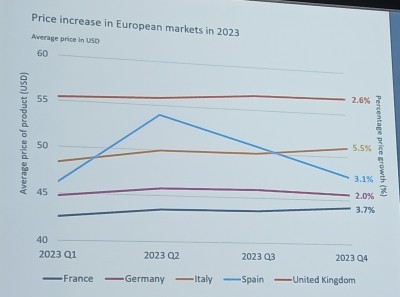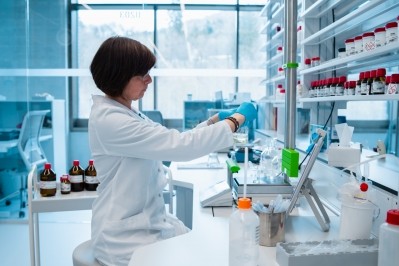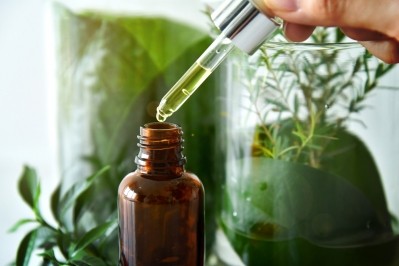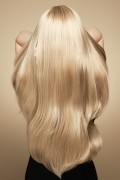A focus on the global cosmetics industry landscape: part II
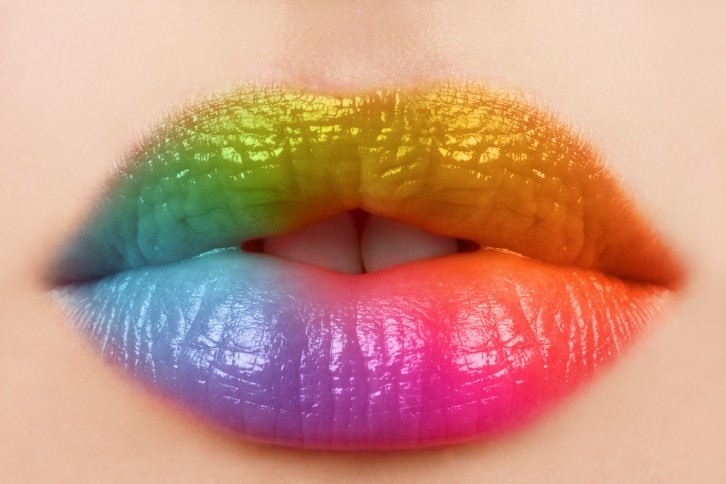
At this year’s Cosmetics Europe Annual Conference, Euromonitor beauty & health senior research analyst Emilie Hood shared an in-depth, data-led analysis of the beauty and personal care industry across the globe.
You can find the first part of this report on the current business landscape of the cosmetics industry here.
In the second part of this report, Hood focuses on macro trends, prices, product dupes, the grand merger of beauty and wellness, and of course, sustainability…
What are the ‘macro’ beauty trends in 2024?
Hood shared that Euromonitor has identified four overarching trends that are currently impacting the global beauty industry.
These are:
- Premiumisation and affordability
- Ingredient-led beauty
- Blurring of wellness concepts
- Evolution of sustainability
She explained that these trends are the cornerstones of what's going on in the industry and they’re not going to change any time soon.
“What we are seeing are pretty significant developments in them based on the global situation,” she explained, noting that 50% of beauty and personal care industry respondents said they believed companies had increased the prices of some products in response to inflation – and that this was “a pretty significant number.”
“We know that inflation has had a massive impact on people, and this is something we do expect to be one of the most prevalent trends, because it has affected everyone in some way, shape or form,” she explained.
Hood shared that 43% of consumers said they liked to find bargains and that many consumers will go out their way to find items on promotion.
“It's all very good having products that they like, but they will wait out until that product is on sale,” she explained,
In terms of prices, Hood shared data from Euromonitor’s web-scraping VIA data pricing platform, which shows the average prices of basic moisturisers, unisex fragrance and lipsticks from the top three brands in terms of companies in terms of value share (L’Oréal, The Estée Lauder Companies, and LVMH).
“As you can see across all markets, there has been an increase,” she said.
Hood explained that in Spain in particular there have been a lot of promotions on price, but that this has also been a global trend.
“Companies are maintaining their margins, but it is making products more expensive, and consumers are then becoming more calculated in whether they buy,” she said. “When you increase prices, consumers will try to find ways around it.”
Hood said that in 2022 there was a noticeable dip in spend on beauty products, as people were being a little bit more calculated in terms of buying beauty and personal care products when they were on offer, or altering their routines to try and make things last longer.
However, in 2023 things have started to even out again.
“Inflation came back down, potentially wages have increased to counteract this, and so spending is going back up again in terms of frequency,” she explained.
However, Hood also noted that the data doesn’t show “whether consumers are trading down” when they currently buy beauty products.
Are beauty dupes still a thing?
Due to the inflationary economy, dupe beauty products have been a huge area of focus in recent years.
“I think TikTok has been a massive influence on this,” explained Hood. “And I think it is a lot down to the fact this is ‘gamifying’ finding a bargain.”
“The earlier stat showed that 43% of consumers enjoy finding bargains,” she continued.
“It's about having fun and being ‘in with the in-crowd.’ You can be on-trend while spending less money. So, dupes are a no-brainer for a lot of consumers.”
However, Hood said she foresees this “kind of drawing back as consumers get a little bit more spending power back.”
“They do prefer to buy premium brands at the end of the day, and they will stay loyal to premium brands when they can afford them,” she highlighted.
Therefore, she recommended that cosmetics businesses will have to “be a bit savvy about what they are doing for consumers to keep them interested when their budgets are stretched.”
She highlighted that lots of businesses are trying to maintain or build consumer loyalty as a way of getting spend up, putting a focus on trying to maintain value, as opposed to cutting prices.
What are consumers prioritising for beauty and personal care products?
Another macro-trend is the attractiveness of ingredient-led beauty and personal care products that are really centred in efficacy.
“There's a lot of focus around having products that actually work, and therefore the active ingredients,” said Hood.
She explained that this in turn has caused “a polarisation of consumers,” which consists of those seeking out clean and conscious ingredients, and those seeking more ‘medical’, derma-based ingredients.
Euromonitor’s data demonstrates a growing awareness and growing interest among consumers for ingredient-based attributes. For example:
- 23% of consumers are looking for natural or organic ingredients in products.
- 37% of beauty and personal care industry respondents have launched new ingredients in the last 12 months.
- 5% of beauty and personal care products now make dermatologically tested claims, compared to 4% in 2019.
For Hood, there is a bit of a “battle” between which side a brand decides to play in: natural or clinical.
In terms of the most popular ingredient features that people consider when buying a product, value is clear. “Consumers want value for money,” she said.
In terms of other important attributes, five out of the 10 are ingredient-based, with ingredient transparency, being organic, being natural, and also being cruelty free all important to consumers.
According to Hood, the data also showed that consumers were willing to spend between 10% and 20% more on ‘premium features,’ which Hood said was a “pretty decisive number”, which emphasises the added value that can be given by certain ingredients to allow businesses to put a higher price tag.
In fact, she noted that only 18% of consumers quizzed said that they wouldn't spend more on ingredient features.
While skin care has been the main category for ingredients innovation, Hood said that “a new frontier is coming into play” in terms of a focus on ingredients innovation and this was hair care.
“There's a lot of innovation in this space around more specific hair care products and being able to treat specific needs,” she explained.
“Hair health is the number one attribute that consumers look for, but we are also seeing things like damage repair and preventive hair loss become more important.”
The data also showed that the three fastest-growing attributes hair care consumers are currently seeking out are:
- Grey camouflaging
- Thickening
- Curl intensifying
For Hood, these were interesting attributes as it demonstrated that people were looking to work with what they had, rather than try to change it.
“Grey camouflaging also suggests an idea of, OK, I'm ageing, and I don't want to keep dyeing my hair forever, but I want to make it a little bit more graceful, as opposed to just a straight change,” she explained.
“And curl intensifying is about embracing the natural and working with what we have, as opposed to trying to completely change it,” she said.
Hood also stated that there is more innovation happening in currently once-niche categories.
She shared that one particular area of focus is the introduction of hair care specifically targeted at women going through the menopause, and said there is a big opportunity here to understand their specific needs, to make products that work well for this issue, and to understand how to target these potential new customers.
Longevity, men’s wellness and personalisation through tech
Health has been in the spotlight for the past few years, starting with the Covid pandemic and Hood said there is “now a lot more optimism around health now in comparison to the Covid era.”
Euromonitor’s data showed that globally:
- 46% of consumers felt optimistic about their future health.
- 63% of the consumers considered mental health to be a primary aspect of health, which Hood said she believed to be a sign of “a move towards a better understanding of holistic health” and how it all fits together.
- 61% of professionals considered healthy living to be a very or extremely influential trend to impacting industry sales in the next 12 months.
Hood also noted that more consumers were associating being healthy with feeling good and that beauty and personal care products are seen as a way to facilitate this.
“If we help someone improve their skin health they will feel better about themselves because they'll feel more confident and therefore they'll feel more positive,” she explained. “This also ties in with things like mental health and a holistic look at your life.”
She also spoke about longevity becoming a buzzword this year.
“Everyone asks me about longevity, and I think it is the new term for this health and wellbeing trend – and the idea of it is living better for longer,” she shared.
“Consumers are acutely aware that the pension age is going up. They're acutely aware that they will have to keep paying their mortgage for ages, and they want to have the ability to enjoy being an adult – to enjoy being a grown up.”
She also flagged that by 2026 the global population aged 65 plus will be double the size of what it was in the year 2000.
“Obviously, global health care is getting better, but I do think there is a lot to be said for this increased power that consumers have over their health. They understand diet and exercise far better than we did 50 years ago,” she continued.
“With the gross annual income of 65-plus individuals set to grow by 9% within the next five years, it's a huge opportunity for businesses to be targeting, engaging with, and relating to people over the age of 65.”
For Hood, a lot of businesses make the mistake of not targeting this generation when it is set to be a very important demographic going forward.
Another area she drew attention to within the realm of longevity, was the bigger-picture change in attitudes towards men's health and self-care.
“I think it's becoming a lot more accessible and a lot more men understand that self-care isn't something just for women. You're allowed to go to the doctors. You're allowed to use skincare products. You're allowed to use sun cream,” she said. “This demographic is really an area that has been underserved for a long time.”
The “illusion of sustainability”
Sustainability has increasingly become both a consumer demand of beauty and personal care companies, as well as a regulatory demand in recent years.
However, Euromonitor’s data demonstrated that: ”when consumers are up against it, sustainability really drops down their list of priorities.”
“It's not tangible enough for them to be concerned about when they are juggling the stresses of whether they are able to pay bills, or if they have a health scare, or something else like this. It's just not front of mind then,” Hood said.
Although she did say that now that the market is calmer, as Covid has become less of a concern and inflation has rationalised, it’s starting to become more important again.
Euromonitor’s data showed that 63% of consumers said they tried to have a positive impact on the environment in their daily life, which Hood stated was a “slightly depressing statistic” that she would have hoped had been higher. Although she drew attention to the fact that this was a global statistic that included the emerging markets – where sustainability is less likely to be top-of-mind. She also explained that many people took a ‘rose-tinted view’ of their actions when answering a consumer survey, so in reality, this number of eco-conscious consumers was likely to be less than the figure stated.
She also noted the data showed that 22% of consumers said that buying eco-conscious or ethically conscious products makes them feel good, which is potentially a positive sign, because “a lot of purchasing influences are based around that kind of feel-good factor.”
Another 52% of consumers said they trusted information on sustainability from governments or non-governmental expert organisations, such as trade associations – which paves the way for beauty and personal care businesses to provide expertise and speak directly to their customers about sustainability.
The other ‘good news’ was that the beauty and personal care industry is very good at sustainability in comparison to other industries, as a lot of beauty and personal care products do make on-pack sustainability claims.
“What this suggests is that consumers are open to buying sustainable beauty and personal care products, they just need to be told which ones they are and where to get them and why they're better, Hood explained.
The barriers to buying sustainable beauty products
So what are the barriers for consumers to buy more sustainable products?
For Hood, price sensitivity was the main one, as “buying sustainable products tend to have a higher price relative to non-sustainable alternatives.”
“Labelling is also super relevant,” she noted. “As they're not really sure what to look for.”
She also flagged that this is a “deep consumer distrust” in relation to businesses and what they say they are doing around the topic of sustainability.
She said that many consumers are “very educated on what businesses are doing and what's gone wrong in the past, how much money they're earning, and how much risk they're producing.”
What are the biggest markets in Europe?
Euromonitor has forecast the global beauty market between 2023 and 2028, which expects the market to stabilise with an average of 2% year-on-year growth.
Hood noted that the industry has recovered from Covid and is back to the value it was at before that period. “The 2% has come from population growth, a little from innovation, and increased economic power,” she explained.
In western Europe, the UK market has the largest value growth, as “a lot of consumers will spend in premium, so the value per unit is higher than in other Western European countries,” she explained.
There was also strong growth in Germany for the same reason, and the biggest overall growth is seen in Sweden, mainly because it’s a smaller market, so the growth more dynamic just by scale.
Belgium and Italy however seen reduced growth, which Hood attributed to “very high inflation” in both markets, as well as “reduced routines in Belgium.”
Looking into Eastern Europe, Euromonitor has paused research in Russia, so data in this market is modelled on historic data and the economic and macroeconomic data that the business has access to.
The largest growth in this region can be seen in Poland and Romania, which Hood attributed to “an increased interest in Western European brands, particularly within fragrance.”
Overall Hood shared that growth is now more positive than it has been the past few years. “It indicates a robust state of the industry, despite various limiting factors that we have going on in the world,” she explained.
She highlighted that the beauty categories are performing better than personal care ones. “They're more fun, so people want to spend more money on them,” she explained.
Hood also said that 'value for money' is making consumers more critical; that they are knowledgeable and educated; very conscious about big business and looking for guidance when it comes to sustainability.
“Growth rates are set to rationalise, but the value of the market is set to continue increase,” she stated, about the future of the beauty landscape.
“And then finally, consumer loyalty is remaining pretty limited, and they are motivated by value for money and fads,” she concluded.
How successful is the beauty industry?
To sum up, Hood shared a few key points to help cosmetics companies better understand the current landscape:
- Global growth for the beauty and personal care industry was higher than expected
- There has been a positive recovery after the losses during Covid, despite aggravating factors
- Beauty generally performs better than personal care
- Value remains king in the future forecast
- Beauty consumers are educated on the topic and discerning
- They are looking to big business and experts for more education on sustainability
- We are seeing value growth, through population changes and extensive routines
- Consumer loyalty is limited: motivated by fads and value
